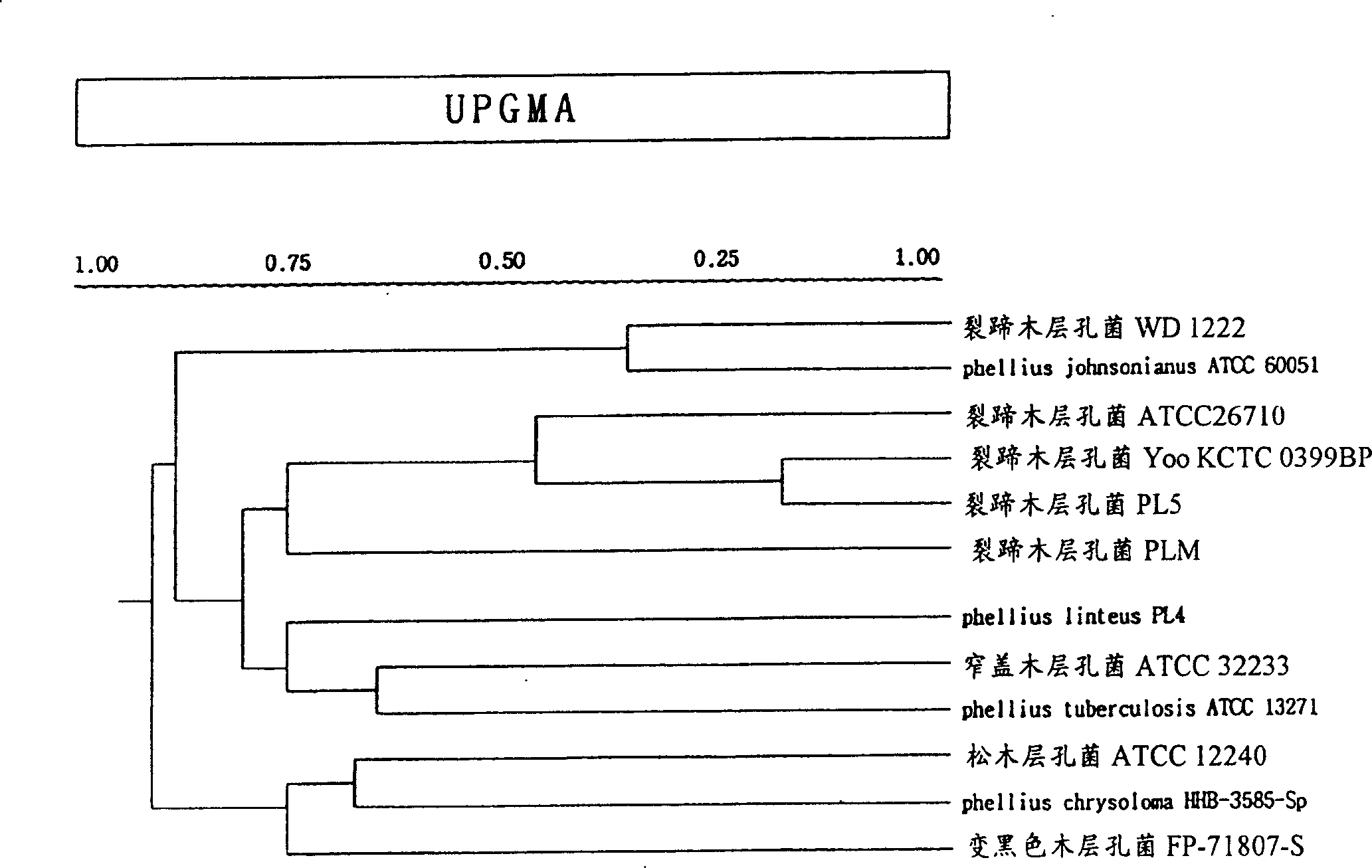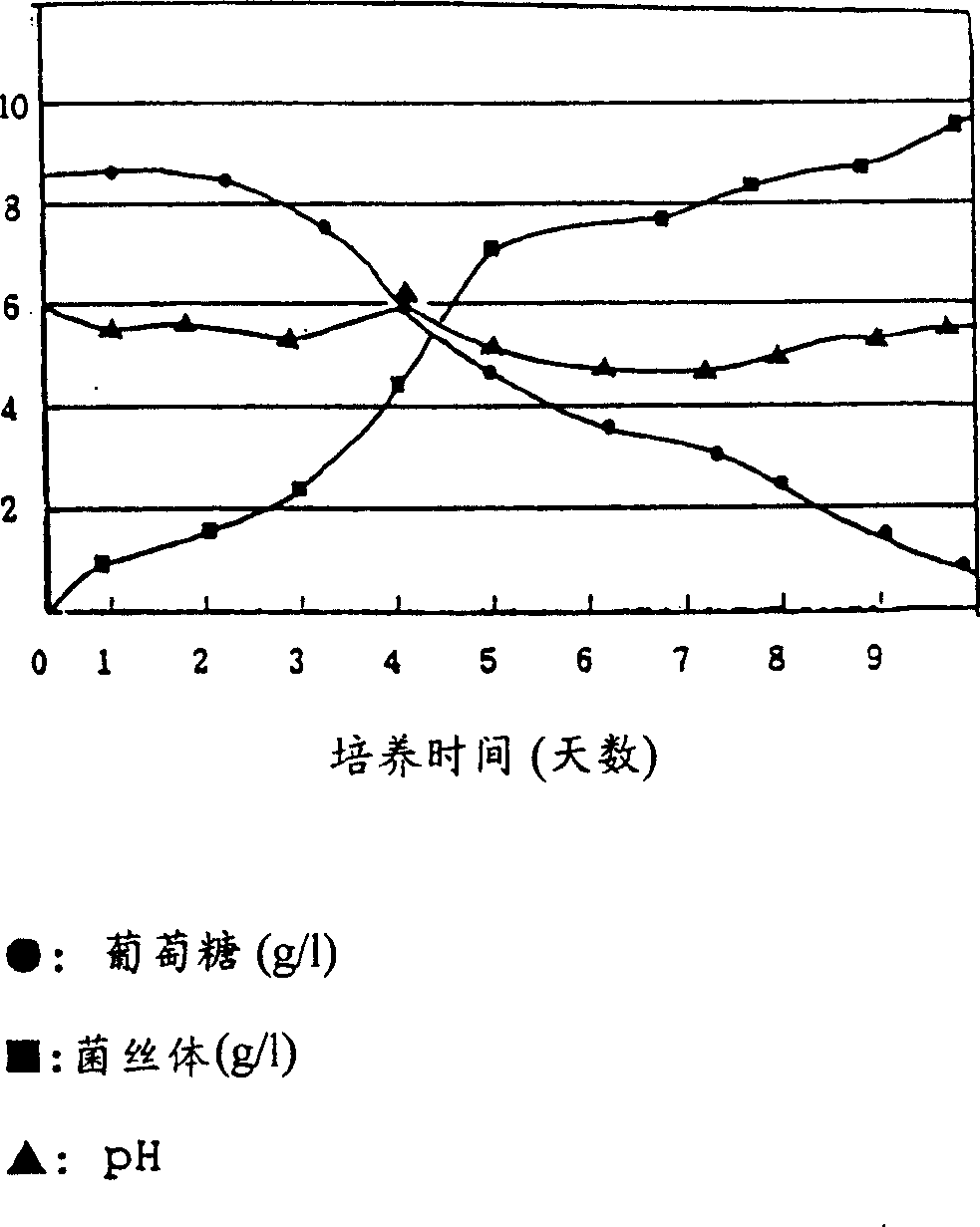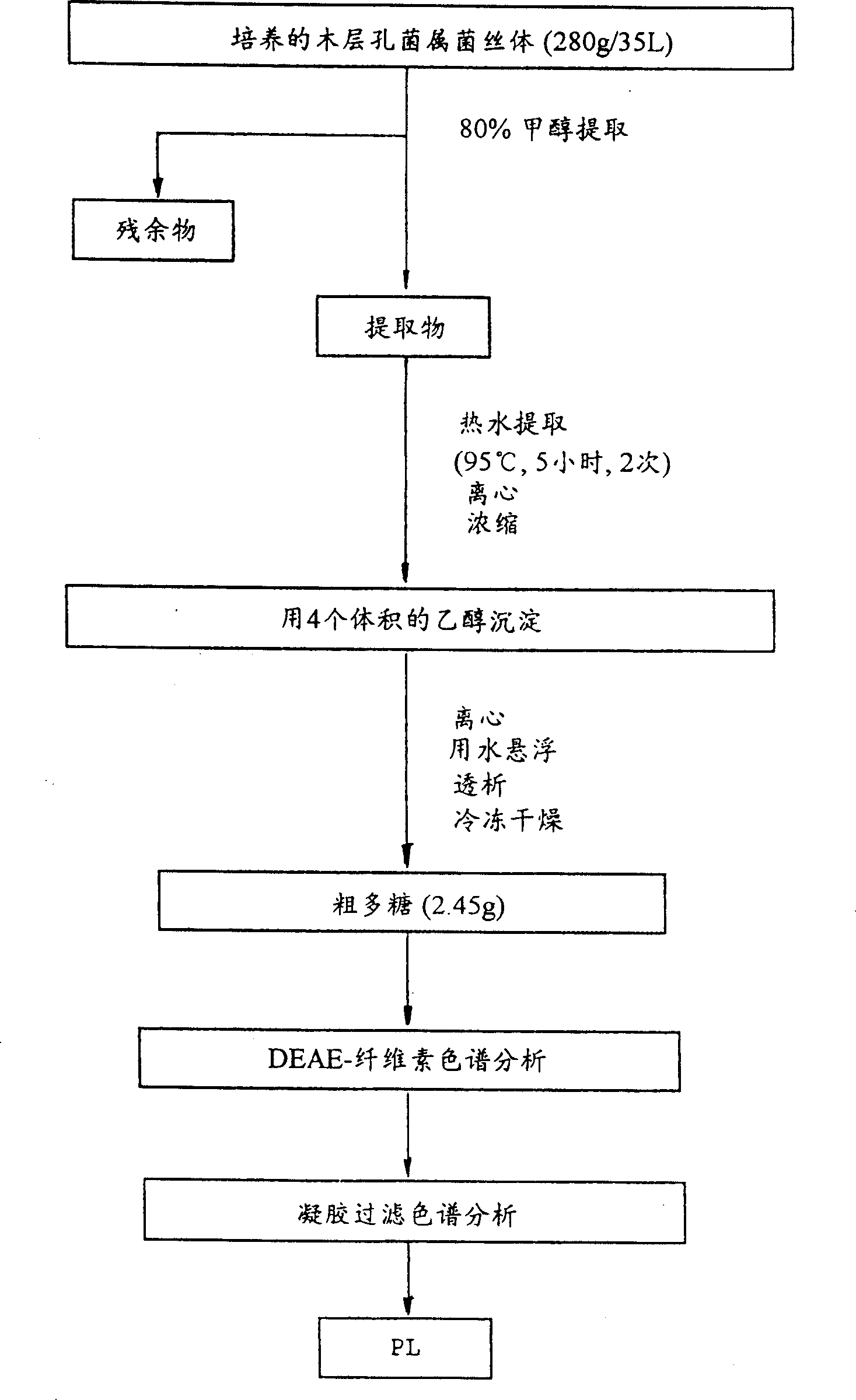Immune stimulated holoside substance of bacterial strain from wood layer hole strain and its application
A technology of immune stimulation and P. clefthoof, which is applied in the direction of medical preparations containing active ingredients, drug combinations, carbohydrate active ingredients, etc., and can solve problems such as difficult identification
- Summary
- Abstract
- Description
- Claims
- Application Information
AI Technical Summary
Problems solved by technology
Method used
Image
Examples
Embodiment I
[0036] Example I: Cultivation of Phellinus spp
[0037] The strains of each Phellinus species given in Table 1 below were cultured on potato dextrose agar (PDA) at a constant temperature of 28°C for 5-12 days. After inoculation in 450 mL of PD broth, each strain was grown at 28° C. and shaking at 120 rpm for 12 days.
[0038] Table 1
[0039]
Embodiment II
[0040] Example II: Isolation of total DNA
[0041] The SDS-phenol method was used to isolate total DNA from mycelium. Each mycelium cultured in Example I was washed with 20mM EDTA, collected by vacuum filtration with a piece of filter paper (Whatman NO.1), stored in a deep freezer maintained at -70°C and freeze-dried. Grind the freeze-dried mycelium, then add 2g of each powder to 20mL extraction buffer (0.2M Tris·HCl, pH8.5; 0.25M NaCl; 25mM EDTA; 0.5%(w / v)SDS), Then add 14mL phenol and 6mL chloroform. After mixing by slow stirring, the solution was centrifuged. The resulting supernatant was treated with 15 μl RANase (10 mg / mL) at 37° C. for 30 minutes, and then with 15 μl proteinase K (10 mg / mL) at 60° C. for another 15 minutes. Thereafter, the enzyme-treated supernatant was thoroughly mixed with an equal volume of a mixture of phenol, chloroform and isoamyl alcohol (25:24:1), and then centrifuged at 12,000X for 30 minutes at 4°C. Before repeating the same centrifugation, the sup...
Embodiment III
[0042] Example III: Isolation of Mitochondrial DNA
[0043] Ultracentrifugation was performed to separate the mitochondrial DNA from the total DNA obtained from each strain of Example II. After mixing with 8.8 g of cesium chloride (available from Sigma in the United States) and 6 μl of dibenzimidium solution (10 mg / mL), the total DNA solution (8 mL) was ultracentrifuged at 40,000×g at 20°C.
[0044] After further identifying the two DNA bands under ultraviolet light, only the upper band that was the mitochondrial DNA fraction was recovered with the help of a 21-gauge syringe needle. An equal volume of isopropanol saturated with CsCl was added to the DNA fraction thus obtained, and after vortexing the mixture gently, it was centrifuged at 1,200Xg at 4°C. Repeat the washing step 6-7 times in order to completely remove dibenzimine from the mitochondrial DNA fragments. Cesium chloride was removed by adding 70% ethanol three times the volume of the mitochondrial DNA fragment to the mit...
PUM
 Login to View More
Login to View More Abstract
Description
Claims
Application Information
 Login to View More
Login to View More - R&D
- Intellectual Property
- Life Sciences
- Materials
- Tech Scout
- Unparalleled Data Quality
- Higher Quality Content
- 60% Fewer Hallucinations
Browse by: Latest US Patents, China's latest patents, Technical Efficacy Thesaurus, Application Domain, Technology Topic, Popular Technical Reports.
© 2025 PatSnap. All rights reserved.Legal|Privacy policy|Modern Slavery Act Transparency Statement|Sitemap|About US| Contact US: help@patsnap.com



